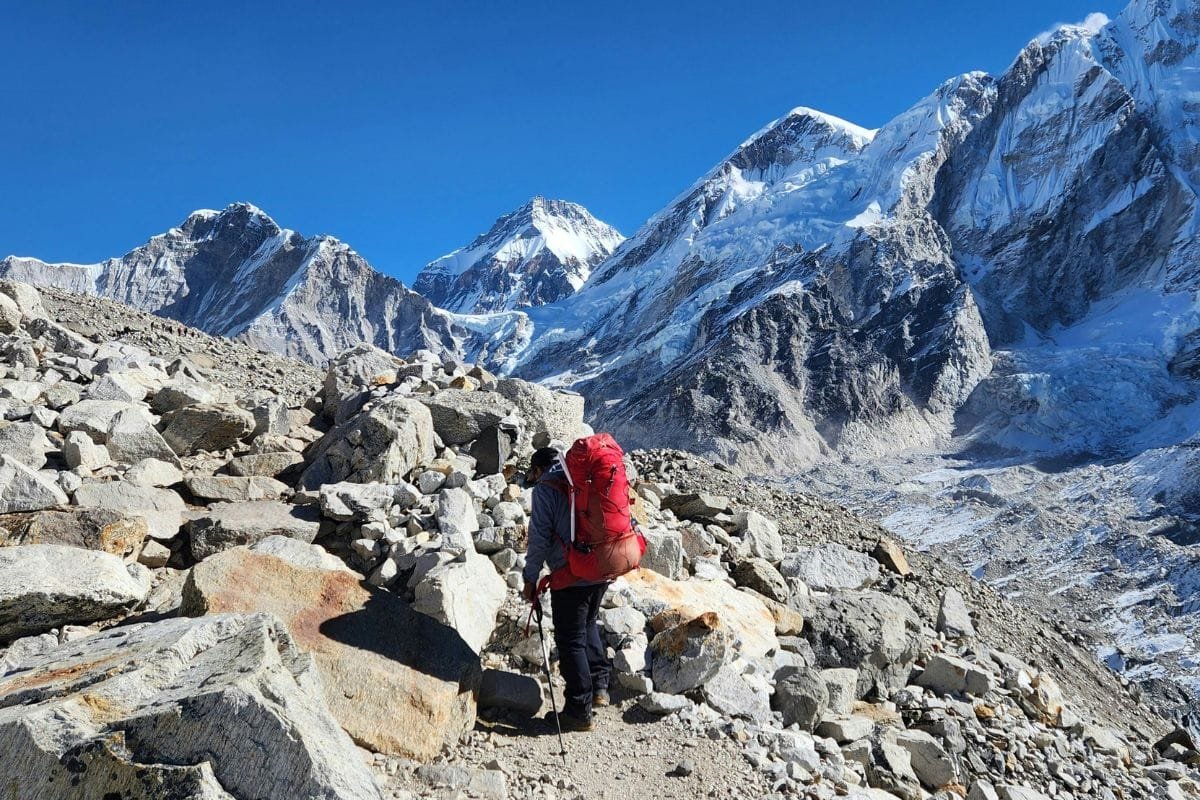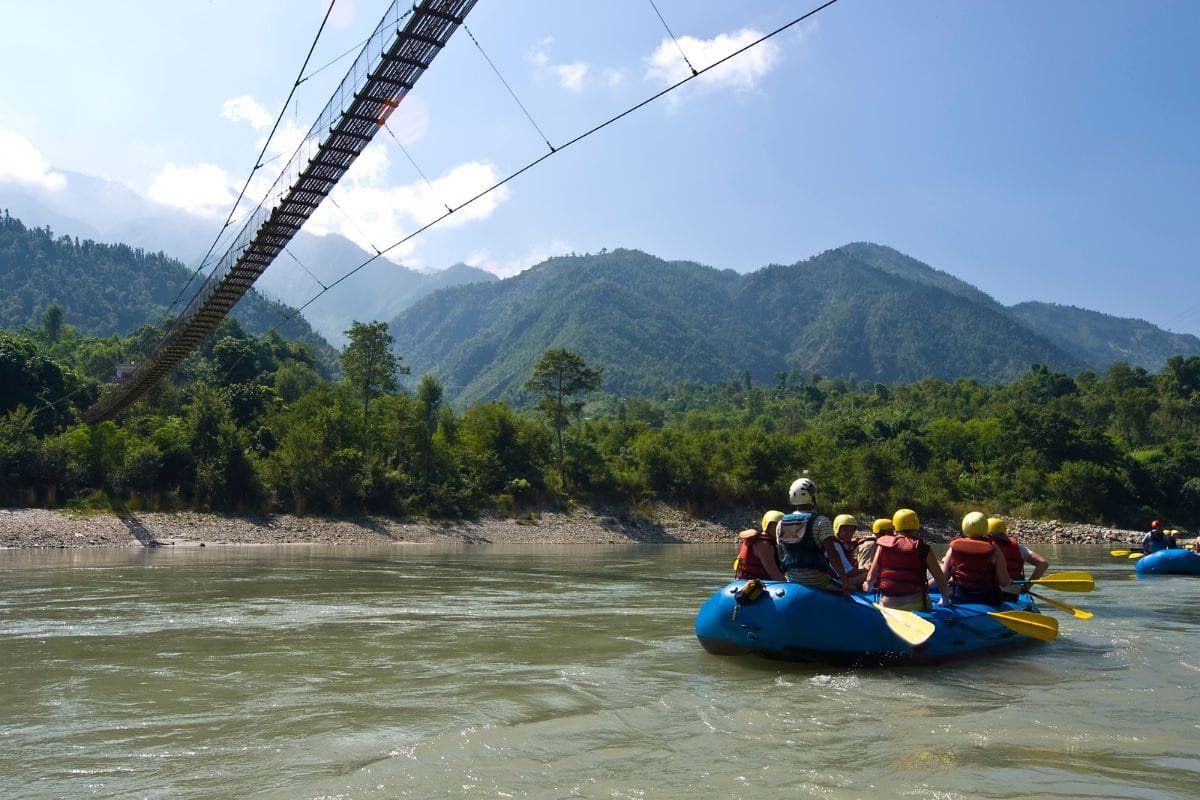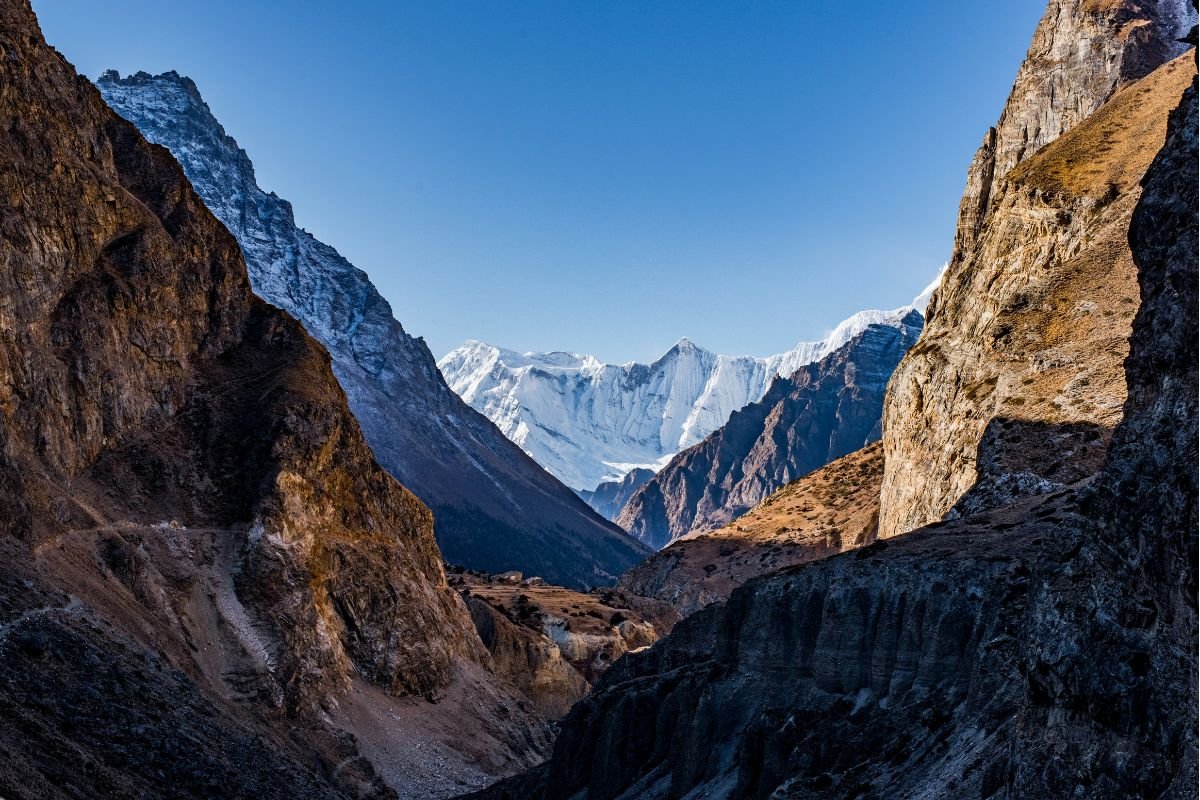Ever heard of the Everest Base Camp Trek or the Annapurna Circuit? Of course you have. But what if I told you there’s a trek in Nepal that offers equally breathtaking views, a deeper cultural experience, and a fraction of the crowds? Welcome to the Langtang Valley Trek. This journey, often hailed as one of the best treks in Nepal, is a perfect blend of natural beauty and cultural immersion, making it one of the country’s most underrated adventures.
This comprehensive guide is for anyone considering the Langtang Trek, from first timers to seasoned hikers. We’ll delve into every detail you need to know, from the best time to go and a day-by-day itinerary to essential packing lists and important safety tips. Get ready to be fully prepared for this unforgettable Himalayan experience.
1. Why Choose the Langtang Valley Trek? A Hidden Gem in the Himalayas

Before we dive into the nitty-gritty, let’s talk about what truly makes the Langtang Valley stand out from the crowd.
- Proximity and Accessibility: Unlike many high-altitude treks that require an expensive and time-consuming domestic flight, the journey to Langtang starts with a scenic, albeit adventurous, drive from Kathmandu. This not only saves you money but also allows for a more flexible schedule, making it a great option for those with less time. The road trip itself offers stunning views of rural life and terraced hills.
- Stunning Scenery and Diverse Landscapes: The trail is a visual feast, taking you through a remarkable range of ecosystems. You’ll begin in subtropical forests filled with monkeys and vibrant rhododendrons, ascend through alpine meadows where yaks graze, and eventually reach a high-altitude glacial valley. The trek culminates in the dramatic cirque of Kyanjin Gompa, where you are surrounded by a natural amphitheater of towering peaks, including Langtang Lirung (7,234m).
- Rich Culture and Warm Hospitality: The Langtang region is the heartland of the Tamang people, an ethnic group whose unique Tibetan-influenced culture is deeply woven into the fabric of the landscape. As you trek, you’ll pass ancient monasteries, see colorful prayer flags fluttering in the wind, and witness the traditional way of life. The teahouses along the trail are run by local families, offering a truly authentic experience and a chance to learn about their traditions firsthand.
- A Trail of Resilience and Support: The valley was devastated by the 2015 earthquake, a tragedy that prompted the entire community to rebuild with incredible strength and determination. Trekking here is not just an adventure; it’s a direct way of supporting these resilient communities and contributing to the local economy. Your visit helps them thrive and ensures their cultural heritage is preserved.
2. Best Time to Trek Langtang: When to Go for the Perfect Experience
Choosing the right time to go can significantly impact your experience. Here’s a breakdown of the seasons:
- Autumn (September to November): The Peak Season
- Pros: This is the most popular time for trekking in Nepal for a reason. The weather is stable, skies are crystal clear, and the mountain views are at their absolute best. Temperatures are comfortable for trekking, with warm days and cool nights.
- Cons: The trails can be a bit crowded, and you may need to book teahouse rooms in advance, especially in October.
- Spring (March to May): The Blooming Season
- Pros: A close second to autumn. The weather is warm and sunny, with excellent visibility. The best part? The entire valley is blanketed with blooming rhododendron, magnolia, and other wildflowers, creating a vibrant, colorful spectacle.
- Cons: Haze can sometimes obscure distant mountain views at lower altitudes.
- Winter (December to February): The Solitude Season
- Pros: If you’re looking for peace and quiet, this is your time. The trails are almost empty, and the views are incredibly crisp and clear after fresh snowfall. The atmosphere is serene and magical.
- Cons: It gets very cold at higher altitudes, dropping well below freezing at night. Snowfall can occasionally block the trail, especially the higher passes. You must be well-equipped with warm gear.
- Monsoon (June to August): The Green Season
- Pros: The landscape is incredibly lush and green. The few trekkers you encounter are mostly locals or seasoned hikers who don’t mind the rain.
- Cons: This season brings heavy, frequent rain and a risk of landslides. Views are often obscured by clouds, and the trails can be muddy and leech-ridden. It’s not recommended for first-time trekkers.
3. The Langtang Trek Itinerary: A Day-by-Day Route Guide
A standard Langtang Valley Trek typically takes between 7 to 10 days, depending on your pace and whether you add side trips. Here’s a popular and well-paced itinerary that allows for proper acclimatization:
- Day 1: Drive from Kathmandu to Syabrubesi (1,460m). The trek starts with a long, 7-8 hour bus or jeep drive. The winding mountain road offers a glimpse of Nepal’s rugged terrain and local villages.
- Day 2: Trek to Lama Hotel (2,470m). The trail today is a gradual climb, following the Langtang Khola (river). You’ll pass through lush forests of oak and rhododendron, listening to the sounds of waterfalls and the chirping of birds.
- Day 3: Trek to Langtang Village (3,430m). The landscape changes dramatically as you ascend. The forest gives way to open alpine meadows, and you’ll start to see the majestic Langtang Lirung towering above. You’ll pass a few small villages before reaching the rebuilt Langtang Village.
- Day 4: Trek to Kyanjin Gompa (3,870m). This is a shorter but exhilarating day. The scenery becomes truly spectacular as the valley opens up into a wide glacial plain. The yak pastures and prayer flags leading to Kyanjin Gompa create a sense of arrival at a spiritual heartland.
- Day 5: Acclimatization Day & Exploration. This is a crucial day for acclimatization and exploration. We highly recommend a side trip.
- Option A: Tserko Ri (5,000m): A challenging but rewarding climb that offers the best panoramic views of the entire Langtang range, including the stunning Langtang Lirung Glacier.
- Option B: Langshisha Kharka (4,200m): A more gentle walk up the valley, providing stunning views of the surrounding glaciers and peaks.
- Day 6: Trek back to Lama Hotel. The return journey is all downhill, making for a faster but equally enjoyable trek.
- Day 7: Trek back to Syabrubesi. Enjoy one last walk through the forest before reaching the end of the trail.
- Day 8: Drive back to Kathmandu. An early start for the long drive back, filled with memories of the trek.
4. What to Pack for the Langtang Trek: Essential Gear & Clothing
Packing smart is key to a comfortable and safe trek. Remember the rule of thumb: pack light but be prepared for anything.
- Clothing (The Layering System):
- Base Layers: Moisture-wicking tops and bottoms (e.g., merino wool or synthetic).
- Mid Layers: A warm fleece or down jacket.
- Outer Layers: A windproof, waterproof jacket and pants. A down jacket is essential for evenings and higher altitudes.
- Pants: Wear comfortable trekking pants. Zip-off pants are a great option for changing temperatures.
- Footwear:
- Hiking Boots: Sturdy, waterproof, and well broken-in trekking boots are your most important piece of gear.
- Camp Shoes: A pair of sandals or trainers for relaxing at the teahouse.
- Gear:
- Backpack: A comfortable 40-60 liter backpack is usually sufficient.
- Sleeping Bag: A quality sleeping bag rated for -10°C (14°F) is highly recommended for chilly nights.
- Trekking Poles: These will save your knees, especially on descents.
- Headlamp: Essential for early morning starts or power outages in teahouses.
- Water Bottle: A reusable bottle and purification tablets or a filter.
- Health & Safety:
- First-Aid Kit: Include band-aids, antiseptic wipes, painkillers, altitude sickness medication (Diamox), and any personal prescriptions.
- Sun Protection: A hat, sunglasses with UV protection, and high-SPF sunscreen are a must.
- Toiletries: Pack biodegradable soap, toothbrush, and a small towel.
5. Permits & Logistics: The Official Stuff You Can’t Forget
To legally trek in the Langtang region, you need two permits. Without them, you will not be allowed to enter the national park.
- Trekkers’ Information Management System (TIMS) Card: This costs about $20 USD. It helps the government keep track of trekkers for their safety.
- Langtang National Park Entry Permit: This costs around $30 USD. It’s your official ticket to enter and support the conservation efforts of the park.
Where to get them: You can obtain both of these permits in Kathmandu from the Nepal Tourism Board Office in Bhrikutimandap. The process is straightforward, but it’s important to do it before you leave for your trek. If you book your trek through a local trekking agency, they will handle all the permits and logistics for you, saving you a lot of hassle.
A Note on Guides: While it is possible to do the Langtang Trek independently, hiring a local guide or porter is highly recommended. Not only do they provide invaluable knowledge of the route and local culture, but it also directly supports the local economy.
Conclusion:
The Langtang Valley Trek is more than just a walk in the mountains. It’s a journey into the heart of the Himalayas, offering a perfect mix of stunning landscapes, rich culture, and the kind of peaceful solitude that’s hard to find on more popular trails. Whether you’re a seasoned trekker looking for a new challenge or a beginner ready to take on your first high-altitude adventure, Langtang is waiting.
With its incredible scenery, welcoming people, and inspiring story of resilience, the Langtang Trek promises an adventure that will stay with you long after you’ve returned home. Start planning your trek, and get ready to discover Nepal’s most beautiful secret.


